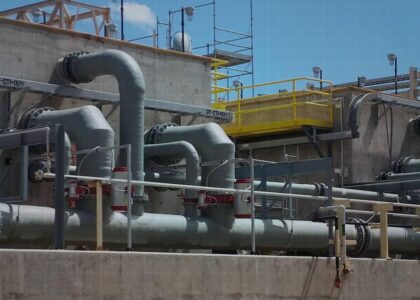In emergency situations, every second matters — especially when lives are on the line. Whether it’s a fire, power outage, or natural disaster, having clear and reliable exit and emergency lighting can mean the difference between a safe evacuation and chaos. These systems are often overlooked until they’re needed, but they play a critical role in ensuring building occupants can find their way to safety quickly and efficiently.
At GMW Fire Protection, we understand how vital well-maintained emergency lighting is for building safety. In this blog, we’ll explore why exit and emergency lighting systems are essential, how they function in critical moments, and why regular maintenance is key.
The Role of Exit and Emergency Lighting in Emergencies
When an emergency strikes, panic can quickly set in — especially in dark or smoke-filled conditions. Exit and emergency lighting provide a clear, illuminated path that helps people navigate safely through buildings and out to safety.
Here’s how they help:
- Visibility during power loss: Emergency lighting is designed to kick in automatically when power fails. This ensures pathways, stairwells, and exits remain lit.
- Guidance through complex spaces: Large buildings or facilities with multiple levels and corridors can be confusing during an emergency. Exit signs and illuminated pathways reduce confusion and direct people toward the safest exit.
- Smoke and low visibility situations: Emergency lighting systems are often installed at low levels along walls or baseboards, making them visible even when smoke rises and dims overhead lights.
Why Maintenance Matters
Even the best-designed emergency lighting system can fail if it’s not properly maintained. Batteries can degrade, bulbs can burn out, and electrical components can malfunction. Without regular testing and maintenance, these issues can go unnoticed until it’s too late.
At GMW Fire Protection, our emergency lighting maintenance services ensure:
- All backup batteries are functional and charged
- Bulbs are in working condition and at the proper brightness
- Systems automatically activate during power loss
- Exit signs are clearly visible and unobstructed
We follow NFPA and OSHA guidelines to help our clients maintain full compliance and stay prepared.
Legal and Safety Requirements
Emergency lighting systems aren’t just a best practice — they’re often required by law. Most commercial and public buildings must adhere to codes established by the National Fire Protection Association (NFPA) and the Occupational Safety and Health Administration (OSHA), which include specific mandates for:
- Duration of emergency lighting after a power loss (typically 90 minutes)
- Brightness levels and sign placement
- Frequency of testing and documentation
Failing to comply with these standards can result in fines or liability in the event of an incident. GMW Fire Protection works with property managers and business owners to ensure all emergency lighting systems meet code requirements and operate properly when needed.
Real-Life Impact
Imagine a large office building losing power during a fire. Without functioning emergency lights, employees might struggle to find exits in the dark, increasing the chances of injuries or worse. Now imagine the same situation with clearly lit pathways, glowing exit signs, and dependable backup lighting — the difference is life-saving.
These systems give people the confidence and ability to respond quickly and calmly during an emergency, helping them exit the building safely.
GMW Fire Protection: Your Partner in Life Safety
We specialize in installing, inspecting, and maintaining exit and emergency lighting systems tailored to your building’s layout and safety needs. With our help, you can ensure your system works flawlessly when it matters most.






